Apple iPhone 4S: Thoroughly Reviewed
by Anand Lal Shimpi & Brian Klug on October 31, 2011 7:45 PM EST- Posted in
- Smartphones
- Apple
- Mobile
- iPhone
- iPhone 4S
Camera Improvements
Arguably the second largest hardware change (with the A5 SoC being the first and largest) in the 4S is the inclusion of a much improved 8MP camera. In case you’ve forgotten, the iPhone 4 previously included a 5 MP camera. Back when the 4 was introduced, Apple talked for the first time about backside illumination, and pixel sizes. In a later update, the camera got even better with the ability to buffer three full size images and merge to HDR in real time. This time, Apple brought up F/# and backside illumination again, and added one more thing.
Though Apple never talked about any of their optical design for the iPhone 4 camera, to the best of my knowledge the design likely was close to reference designs reported on a few lens lists consisting of four plastic elements. For the 4S, Apple has mixed things up by including its own optical design front and center, and made special note of a five plastic element design. I’ve put together a table showing the 4 and 4S in comparison based on what information is available.
Note that many have speculated that Apple is dual sourcing the CMOS sensor which seems likely, and given the sensors out there the two most likely choices are Omnivision’s OV8830 and Sony’s IMX105. Both of these have almost identical specifications, including 1.4µm pixels, a 1/3.2“ format, and an improved backside illumination process over the previous generation wafer-scale process. Omnivision’s BSI–2 process cites some specifications that seem to line up with what Apple talked about in their presentation, including better quantum efficiency (ability to convert photons into electrons), low-light sensitivity, and larger well capacity (which translates to increased dynamic range). You’ll note that the 4S uses the same sensor format as the previous generation - 1/3.2”, and includes more pixels, which results in the pixel size going down from 1.75µm to 1.4µm.
| iPhone 4 vs. 4S Cameras | ||
| Property | iPhone 4 | iPhone 4S |
| CMOS Sensor | OV5650 | OV8830/IMX105 |
| Sensor Format | 1/3.2" (4.54 x 3.42 mm) | 1/3.2" (4.54 x 3.42 mm) |
| Optical Elements | 4 Plastic | 5 Plastic |
| Pixel Size | 1.75 µm | 1.4 µm |
| Focal Length | 3.85 mm | 4.28 mm |
| Aperture | F/2.8 | F/2.4 |
| Image Capture Size | 2592 x 1936 (5 MP) | 3264 x 2448 (8 MP) |
| Average File Size | ~2.03 MB (AVG) | ~2.77 MB (AVG) |
Everybody likes talking about sensors (and I see lots of attention given to them), but any good photographer knows that it’s a combination of optical system and sensor that matters to performance. Optical design is important, and having studied as an optical engineer I find it interesting that Apple would draw attention to having a custom design of their very own with an additional plastic element. For a while I’ve held off on really talking about smartphone camera optics, but while we’re here, let’s touch briefly on them.
Thus far this generation and the one before it have primarily used 4 plastic elements, and virtually everyone but Nokia uses nothing but plastic (Nokia famously uses Zeiss-branded designs, often with glass elements). Optical design is generally driven by material availability, and there are only a few optical grade (read: transmissive in the visible) thermoplastics out there - Styrene, Polystyrene, ZEONEX, PMMA (Acrylic) and so forth - the list is actually relatively short. Thankfully polystyrene and PMMA can be used to make something of an achromatic pair, with polystyrene as a flint, and PMMA as something of a crown. Plastic provides unique constraints as well though - coatings don’t stick well, not very many have great optical properties, they have a high coefficient of thermal expansion, high index variation with temperature (which oddly decreases with increasing temperature), and less heat resistance or durability among others. With all those downsides you might wonder why smartphone vendors use plastic, and that reason is simple - they’re cheap, but more importantly, they can be molded into complicated shapes. Those complicated shapes are aspheres, which are difficult to fabricate out of glass, and afford much finer control over aberrations using fewer elements, which is an absolute necessity when working with very little package depth.
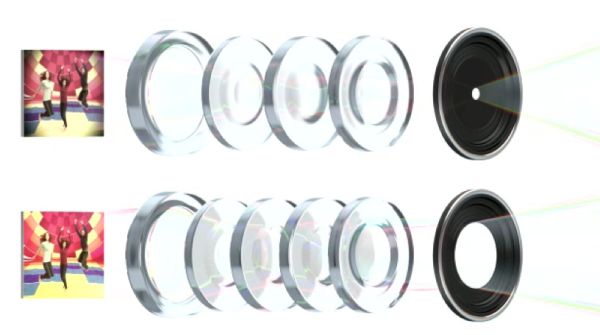 Apple's 4S versus 4 infographic
Apple's 4S versus 4 infographic
So what does adding another element get you? Well, when you’ve faced with limited material choices, adding more surfaces gives you another opportunity to balance aberrations that start blowing up rapidly as you increase F/#. That said, there are tradeoffs as well to adding surfaces - more back reflections, increased cost, and a thicker system. In the keynote, Apple notes that sharpness is improved by 30% in their new 5 element design, and MTF is what they’re undoubtably alluding to.
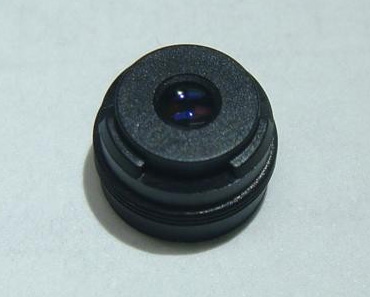
Genius electronic optical - 5P lens. Compare to above.
Genius electronic optical has a page on their website with a lens system that seems likely to be what’s in the 4S, as the specifications include 8 MP resolution (same size), same sensor format, F/# (2.4), 5 plastic elements (5P) and looks basically like what’s in the 4S. Other than that, however, there’s not much more that I can say about this Apple specific design without destructively taking things apart. One thing is for certain however, and it’s that Apple is getting serious about camera performance, something that other handset vendors like HTC (with its F/2.2 systems) are also doing.
Apple made mention that it also included an IR filter in the 4S optical design. If you recall back to our Kinect story, I used the 4 camera to photograph the IR laser structured light projector that Kinect uses to build a 3D picture. The 4 no doubt has an IR filter (though not a great one), but it’s probably just a thin film rather than a discrete filter right before the sensor. The 4S includes what Apple has deemed a ‘hybrid IR filter’ right on top of the sensor, which is possibly just a combination of UV/IR CUT filter (UV is a problem too), and an anti-aliasing filter.
If you try and take the same Kinect (IR source) picture with the 4S, thankfully all those non-visible, IR wavelength photons get rejected by the filter. This doesn’t sound like much until you realize that silicon is transparent in the IR and will bounce around off the metal structures inside a CMOS or CCD and create lovely diffraction effects on fancy sensors. I digress though since that’s probably not what Apple was trying to combat here. On a larger scale, IR will generally just cause undesirably incorrect color representation, and thus people stick an IR filter either in the lens somewhere or before the sensor, which is what has been done in the 4S. The thin film IR filters that smartphones have used in the past also are largely to blame for some of the color nonuniformity and color spot (magenta/green circle) issues that people have started taking note of. With these thin film IR filters, rays incident on the filter at an angle (as we move across the field) change the frequency response of the filter and the result is that infamous circular color nonuniformity. I wager the other effect is some weird combination of vignetting and the microlens array on the CMOS, but when I saw Apple make note of their improved IR filter my thoughts immediately raced to this ‘hybrid IR filter’ as being their logical cure for the infamous green circle the iPhone 4 exhibits.
Another minor difference on the 4S is that the LED flash is improved. The previous LED flash had a distinctively yellow-green hue, the LED flash on the 4S seems slightly brighter and also has a temperature that’s subjectively much closer to daylight, though I didn’t measure it directly. I habitually avoided using LED illumination on the 4 and will probably continue to do so on the 4S (and use HDR instead), but it does bear noting that the LED characteristics are improved. Unfortunately the diffuser and illumination pattern still isn’t very uniform or wide. It also seems that all this talk of moving the LED flash to the other side of the device to combat red eye turned out wrong as well.


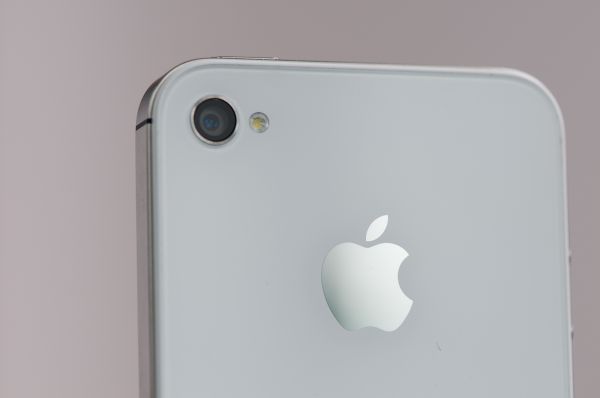
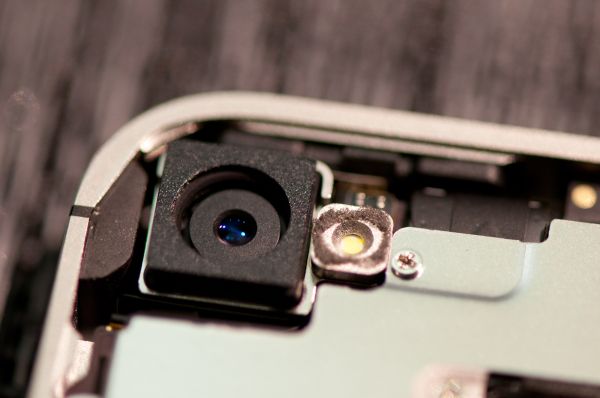
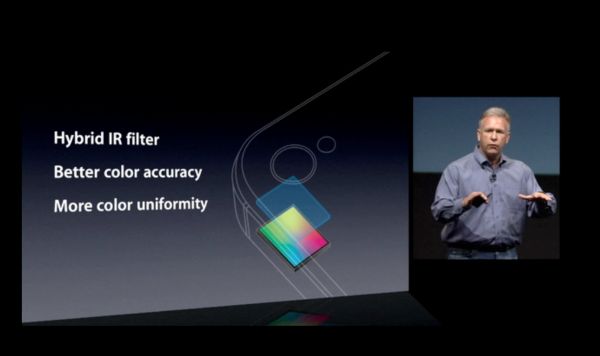








199 Comments
View All Comments
Lucian Armasu - Wednesday, November 2, 2011 - link
Anand, you said the GLbenchmark is the only good cross-platform graphics benchmark. Was GLBenchmark made originally for iOS? Don't you think that it could be biased (possibly unintentionally) towards shader performance in its scores, which would make it favor the PowerVR GPU's more?At the end of the day, these are all just syntethic benchmarks, and sometimes they could be way off from real world performance tests. So what if GLBenchmark doesn't give a too big score for stuff that the other chips are good at, like physics, geometry, whatever, and it gives higher score for shader stuff?
Another question, don't you think shader performance is starting to limit what the games can show about now? Will it really help games that much if they received 20x shader performance in the next 2 years?
thunng8 - Wednesday, November 2, 2011 - link
Glbenchmark was originally release for Linux, Symbian and Windows Mobile.thunng8 - Wednesday, November 2, 2011 - link
Also you do realize that Glbenchmark consists of many tests including some primitive tests like fill rate and Geometry?By other Gpu, do you mean the Mali-400 or GeForce ulp? The standout result I saw was how weak the Mali was at geometry being 4x slower while fill rate was less than 2x slower than the 543mp2
lemmo - Wednesday, November 2, 2011 - link
Thanks for the review, but did I miss analysis on audio quality... for music, not voice quality?You've started this with the Galaxy S2, really useful, and I believe you're developing your testing methodology. But any indication how the iPhone audio quality compares to S2, Prime and others?
cacca - Wednesday, November 2, 2011 - link
if nobody has photo-shopped the images at page 3 i not quite strenge that you have a better throughput.iPhone 4 test done at PM 4.24, a normal afternoon, with quite a lot of traffic
iPhone 4s test done at AM 3.34, a quite early bird, no problems or fight for resources with other phones
To you is normal to test at so different times? An for you there is no difference between a late afternoon and 3.34 in the morning?
bah
koinkoin - Wednesday, November 2, 2011 - link
I was wondering what the battery time is when you call with a headset. I do almost all my call with a headset to keep my hand free (on the wheel or keyboard). How much does this affect the battery time.Also I use a Blackberry and it always check for new email, I sometime read the mail while on the phone, when you do the talk time test is there a connection for email open?
koinkoin - Wednesday, November 2, 2011 - link
I was wondering what the battery time is when you call with a headset. I do almost all my call with a headset to keep my hand free (on the wheel or keyboard). How much does this affect the battery time.Also I use a Blackberry and it always check for new email, I sometime read the mail while on the phone, when you do the talk time test is there a connection for email open?
Griswold - Wednesday, November 2, 2011 - link
I dont think the results the new camera deliver are superior to the one in the iphone4. Judging by the vast number of shots Engadget compared between these two phones and a couple other premium phones, the iphone4s shows alot more noise than the older model, even in broad daylight. Its probably the increased pixel count, which cant be countered by the other improvements.Its not bad, but its also not better than the old camera. The old saying remains true: more pixels doesnt equal better pictures.
jwwpua - Wednesday, November 2, 2011 - link
In the section WIFI, GPS, AUDIO, SPEAKERPHONE, I don't see anything about the speakerphone. Is it louder? Any tests done? Clarity?Thanks, great review!
freezer - Thursday, November 3, 2011 - link
I think you should have the GPU benchmark using phone's native resolution. That would give more accurate results in real world gaming situation than running all phones using same resolution.The iPhone 4S 3.5" screen has much more pixels than Galaxy S2 4.3" screen which gives latter advantage in 3D speed. That is because the GPU has to draw every pixel in every frame. There's no way around it.
In fact running GL Benchmark 2.1 Pro High in native resolution gives very different results as Galaxy S2 comes at top:
http://glbenchmark.com/result.jsp?benchmark=glpro2...